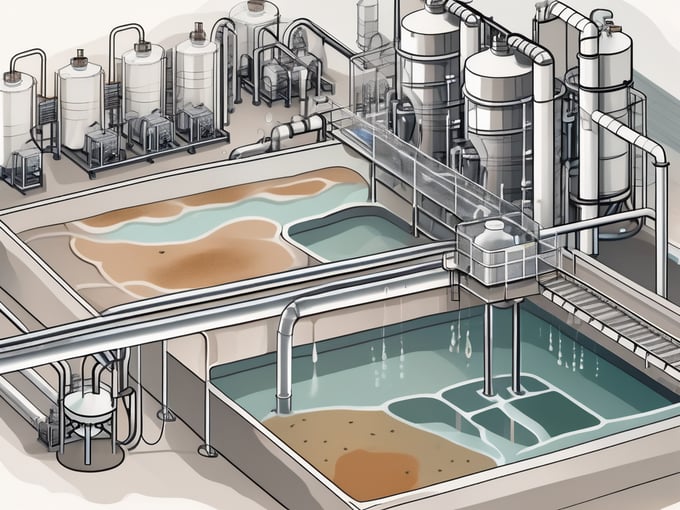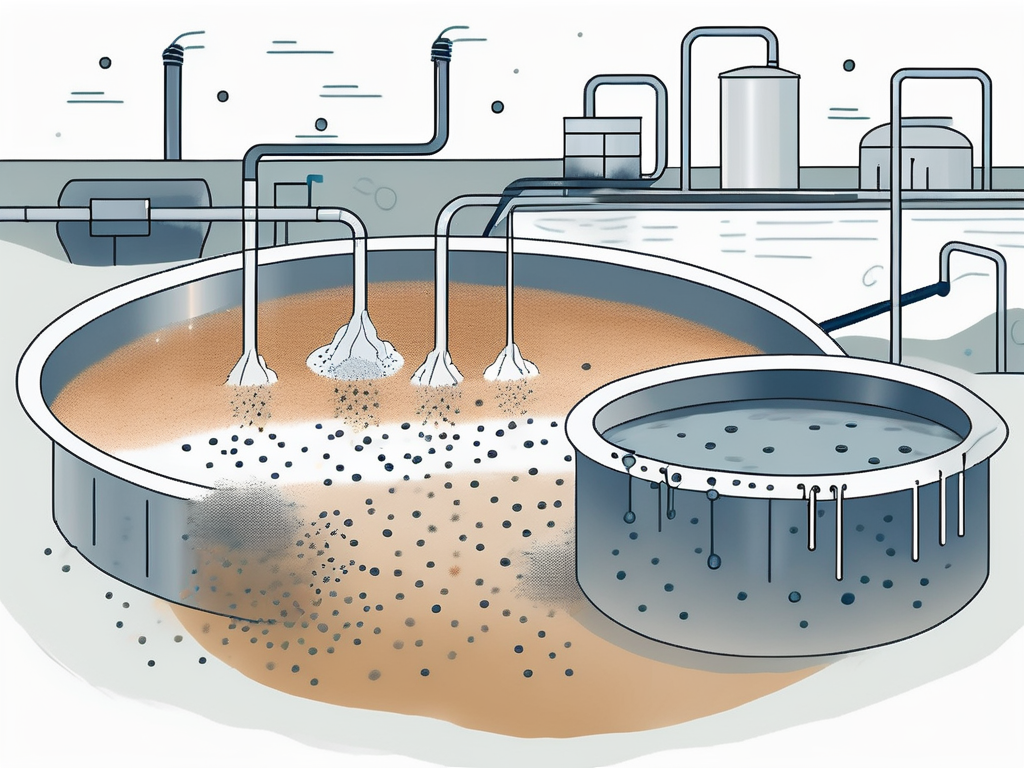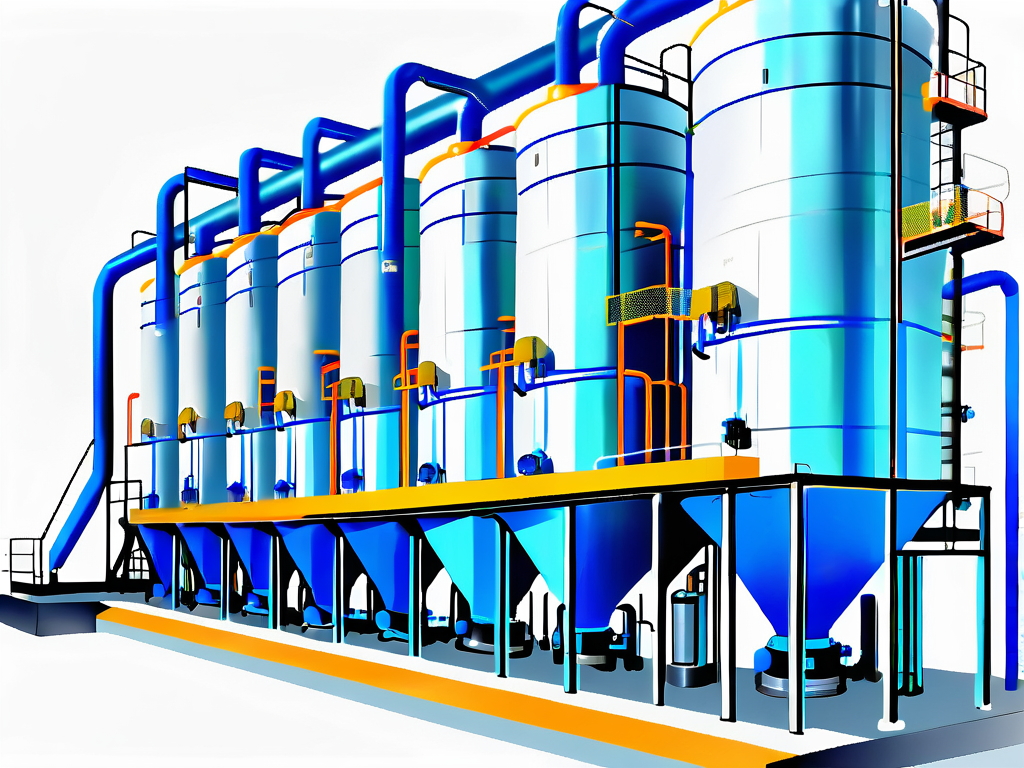
Grit Removal: Wastewater Treatment Explained
In the vast and complex world of wastewater treatment, grit removal stands as a crucial process that ensures the efficiency and longevity of the entire treatment system. It is a procedure that involves the extraction of heavy inorganic materials, such as sand, gravel, and other particulates, that are typically found in wastewater. These materials, collectively referred to as 'grit', pose significant challenges to the wastewater treatment process if not properly managed.
Grit removal is an essential step in the preliminary stage of wastewater treatment. It is designed to protect the mechanical equipment from potential damage, reduce operational problems, and enhance the overall effectiveness of the treatment process. This article aims to provide a comprehensive understanding of the grit removal process, its importance, the various methods employed, and the challenges faced in its implementation.
Understanding Grit and Its Impact on Wastewater Treatment
Grit is a generic term used to describe the heavy inorganic materials present in wastewater. These materials, which include sand, gravel, eggshells, metal fragments, and other similar particulates, are denser than organic solids and tend to settle at the bottom of the tanks during the treatment process.

The presence of grit in wastewater can have several detrimental effects on the treatment process. It can cause excessive wear and tear on mechanical equipment, leading to frequent breakdowns and increased maintenance costs. Furthermore, grit can accumulate in process units, reducing their capacity and efficiency. It can also lead to blockages in pipelines and other conveyance systems, disrupting the smooth flow of wastewater through the treatment plant.
The Importance of Grit Removal
Given the potential challenges posed by grit, its removal is of paramount importance in the wastewater treatment process. By eliminating grit at the preliminary stage, the treatment plant can prevent damage to mechanical equipment, maintain the efficiency of process units, and ensure the uninterrupted flow of wastewater through the system.
Moreover, effective grit removal can also enhance the quality of the treated wastewater and the residual sludge. This is particularly important in scenarios where the treated water is intended for reuse or the sludge is planned for land application. By removing grit, the treatment plant can meet the stringent quality standards required for these purposes and contribute to the sustainable management of water resources.
Methods of Grit Removal
There are several methods employed for grit removal in wastewater treatment plants. These methods can be broadly categorized into gravitational, centrifugal, and aerated systems. Each of these methods has its own advantages and disadvantages, and the choice of method depends on various factors such as the characteristics of the wastewater, the size of the treatment plant, and the specific operational requirements.
Gravitational systems, as the name suggests, rely on the principle of gravity for grit removal. They are typically designed as large settling tanks where the wastewater is allowed to stand still. The grit, being denser than the wastewater, settles at the bottom of the tank and is subsequently removed.
Centrifugal Systems
Centrifugal systems, on the other hand, use the principle of centrifugal force for grit removal. In these systems, the wastewater is introduced into a cylindrical or conical tank at high velocity. The centrifugal force generated causes the grit to move towards the outer wall of the tank, from where it is collected and removed.
Centrifugal systems are generally more efficient than gravitational systems in removing grit. However, they are also more complex and require higher operational and maintenance efforts. Furthermore, they are more suitable for large treatment plants that have high volumes of wastewater to process.
Aerated Systems
Aerated systems employ a different approach for grit removal. In these systems, air is introduced into the wastewater to create a rolling motion. This motion causes the grit to settle at the bottom of the tank, while the lighter organic solids remain suspended in the wastewater.
Aerated systems offer several advantages over the other methods. They are more efficient in removing fine grit and can handle variations in the grit load. Moreover, they require less space and are easier to operate and maintain. However, they also have their own limitations, such as the need for a continuous supply of air and the potential for odour issues.
Challenges in Grit Removal
Despite its importance, grit removal is not without its challenges. One of the main challenges is the variability in the characteristics of the grit. The size, density, and composition of the grit can vary significantly, depending on the source of the wastewater. This variability can affect the efficiency of the grit removal process and require adjustments in the operational parameters.
Another challenge is the potential for grit re-suspension. This can occur when the settled grit is disturbed by changes in the flow conditions or by the action of mechanical equipment. Grit re-suspension can reduce the effectiveness of the grit removal process and lead to the accumulation of grit in downstream process units.
Operational and Maintenance Challenges
Operational and maintenance challenges are also common in grit removal systems. These challenges can arise from the wear and tear of mechanical equipment, the need for regular cleaning of the grit removal units, and the disposal of the removed grit. Furthermore, the performance of the grit removal system can be affected by changes in the wastewater flow rate and composition.
Despite these challenges, grit removal remains a critical component of the wastewater treatment process. With proper design, operation, and maintenance, grit removal systems can effectively manage the grit load and contribute to the overall efficiency and reliability of the treatment plant.
Future Trends in Grit Removal
As the demand for efficient and sustainable wastewater treatment continues to grow, there is a growing interest in improving the grit removal process. Recent trends in this area focus on enhancing the efficiency of grit removal, reducing the operational and maintenance efforts, and managing the removed grit in a sustainable manner.

One of the key trends is the development of advanced grit removal systems that can handle variations in the grit load and remove fine grit more effectively. These systems employ innovative technologies such as computational fluid dynamics and advanced imaging techniques to optimize the grit removal process.
Sustainable Grit Management
Sustainable grit management is another important trend in the field of grit removal. This involves the recovery and reuse of the removed grit, instead of disposing of it as waste. The recovered grit can be used in various applications such as construction materials, landfill cover, and road base. This not only reduces the environmental impact of grit disposal but also provides a potential source of revenue for the treatment plant.
In conclusion, grit removal is a vital process in wastewater treatment that ensures the efficiency and longevity of the entire system. Despite the challenges, with the right methods and technologies, it is possible to manage the grit load effectively and contribute to the sustainable treatment of wastewater.



